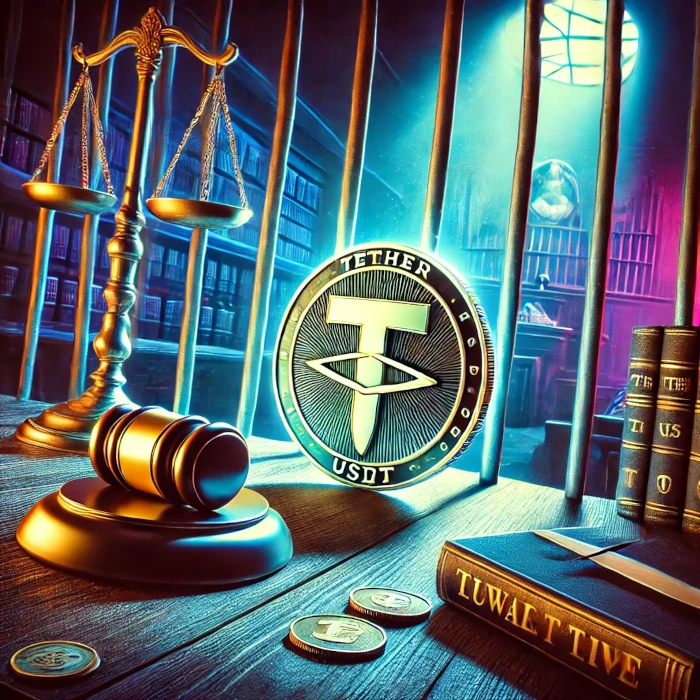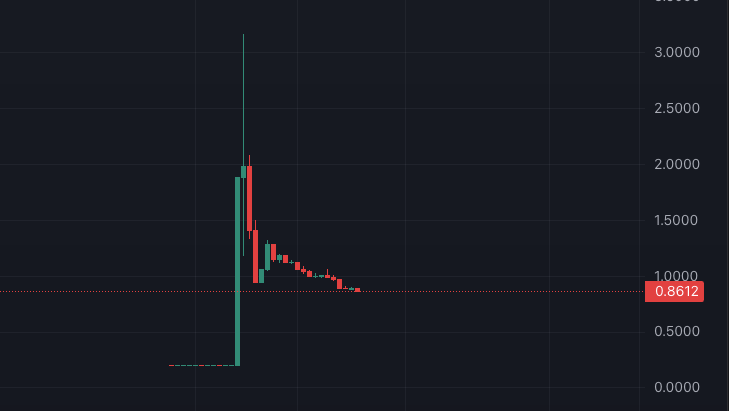
Tether USDT facing delisting under MiCA regulations, highlighting its transparency challenges and the growing question: Will Tether delist?
Will Tether be Delisted?
Tether (USDT), one of the most widely used stablecoins in the cryptocurrency market, is facing being delisted on many exchanges. Each bullrun there’s some kind of FUD (Fear, Uncertainty and Desperation) surrounding Tether. It is such a joke that there’s a phrase commonly used by crypto enthusiasts, “Load up the Tether FUD“. Well, it looks like this time the FUD is real and it is being delisted on many exchanges, including Binance.
Recently, multiple European exchanges have announced they will delist Tether USDT. The reason is for compliance issues with new regulations under the European Union’s Markets in Crypto-Assets (MiCA) framework. This follows a history of controversies surrounding Tether, most importantly its lack of transparency regarding reserves.
Here’s what you need to know about Tether USDT, why it’s being delisted, and what this means for the future of stablecoins.
What Is Tether USDT?
Tether USDT is a stablecoin designed to maintain a 1:1 value with the U.S. dollar. This means that USDT is pegged to the United States dollar. This makes it an important tool for crypto traders looking to escape market volatility without converting back to fiat currencies. Since its launch in 2014, USDT has become one of the most widely used stablecoins in the world. Tether has facilitated billions in daily transactions across many exchanges.
A History of Transparency Issues
Despite its widespread use, Tether has had controversy for years. Critics and regulators have questioned whether Tether’s claims of being fully backed by dollar reserves are accurate.
In 2021, Tether settled with the New York Attorney General’s office over allegations of misrepresentation. The investigation showed periods when Tether was not fully backed. This caused many to doubt its reliability. This lack of transparency has been a recurring issue. This caused some exchanges, like Coinbase, to delist USDT from their platforms.
Why Is Tether USDT Being Delisted from European Exchanges?
The recent wave of delistings is tied to the European Union’s new MiCA regulations. These regulations aim to create a standardized framework for cryptocurrency across EU member states. MiCA imposes strict requirements on stablecoins, including:
- Full Reserve Backing: Stablecoins must demonstrate they are entirely backed by assets.
- Regular Transparency Reports: Issuers must provide detailed documentation of reserves.
- Operational Standards: Companies must meet rigorous compliance and oversight standards.
Tether’s history of shady practices makes it difficult for the company to meet MiCA’s stringent requirements. As a result, many European exchanges are delisting Tether USDT to avoid regulatory risks.
What Are MiCA Regulations?
The Markets in Crypto-Assets (MiCA) regulations were introduced to bring clarity and uniformity to cryptocurrency regulation across Europe. They address a range of issues, including consumer protection, financial stability, and market integrity.
For stablecoins, MiCA sets the bar high, requiring transparency, accountability, and operational excellence. Issuers must prove their tokens are fully backed, report regularly on reserves, and comply with oversight mechanisms designed to prevent market manipulation and fraud.
The Implications of Tether’s Delisting
The delisting of Tether USDT from European exchanges is a major blow to its reputation and market access. Europe is a key region for cryptocurrency trading, and losing access to these markets could impact Tether’s dominance in the stablecoin sector.
Moreover, this situation highlights a broader trend: the increasing regulatory scrutiny on stablecoins worldwide. With their growing importance in the global financial system, stablecoins can no longer operate in a regulatory gray area.
What’s Next for Tether and the Stablecoin Market?
For Tether, the path forward involves tough decisions. Complying with MiCA regulations would require significant changes to its operations. This includes enhanced transparency and stricter reserve management. Failure to make these changes could lead to more delistings in other regions.
The stablecoin market as a whole is also at a crossroads. As regulations tighten, issuers must prioritize compliance and transparency to remain viable. While this might be frustrating in the immediate short term, it could create more trust and stability in the future.
Conclusion
The delisting of Tether USDT from European exchanges under MiCA regulations marks a turning point for the cryptocurrency industry.
The good news is that if you are holding Tether on decentralized wallets like MetaMask, Trust Wallet, you won’t have much of a problem. Decentralized finance doesn’t rely on centralized exchange (CEX) policies. The problem to be concerned with is Tether de-pegging (losing it’s value) against the U.S dollar. Unlikely, but it is always a possibility. It is best to spread out the risk with your stablecoins by not keeping all of you eggs in the same basket.
Also, here is the statement from Binance explaining their reason for delisting USDT.
S Taylor is a crypto trader with five years of experience, having navigated a wide range of market dynamics and witnessed numerous scams firsthand. As a former victim of scams, S Taylor turned their focus to blockchain forensics and Solidity Smart Contract development, gaining deep technical expertise in the field. With a unique insider’s perspective, they’ve been involved in various crypto projects, where they’ve seen how developers can exploit vulnerable investors.
S Taylor is also the published author of Meme Coins Made Easy, a comprehensive guide that teaches beginners about cryptocurrency and how to identify and avoid common scams. S Taylor is dedicated to sharing valuable insights and helping the crypto community stay informed and safe.
Disclaimer: This article is for informational purposes only and should not be considered legal, tax, investment, or financial advice.



